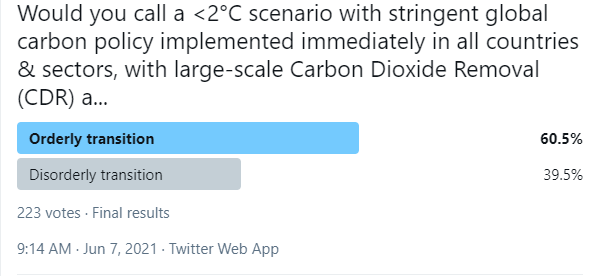
The EU has a LULUCF sink of ~250MtCO₂/yr:
* ~300MtCO₂/yr is forests remaining forests (a share of which is due to climate change & CO₂ fertilisation)
* ~50MtCO₂/yr is land converted to forests
* ~50MtCO₂/yr is increased storage in wood products
* The rest is a source
1/
* ~300MtCO₂/yr is forests remaining forests (a share of which is due to climate change & CO₂ fertilisation)
* ~50MtCO₂/yr is land converted to forests
* ~50MtCO₂/yr is increased storage in wood products
* The rest is a source
1/

This sink has a huge policy significance, as the sink allows to offset emissions in hard-to-mitigate sectors & reach net zero in 2050.
But, using forests could also help reach net-zero by displacing some fossil fuels?
2/
But, using forests could also help reach net-zero by displacing some fossil fuels?
2/

Just focusing on forests, the EU could increase harvest, weakening the sink, & use the harvest to displace materials (e.g. cement in construction) or fossil fuels (e.g., bioenergy).
[hypothetical numbers]
According to the JRC, this is probably worse!
3/
publications.jrc.ec.europa.eu/repository/han…
[hypothetical numbers]
According to the JRC, this is probably worse!
3/
publications.jrc.ec.europa.eu/repository/han…

An additional issue is that integrated assessment models do not include the sink from forests remaining forests, so hard to assess these issues in an IAM.
People are working on this...
nature.com/articles/s4155…
4/
People are working on this...
nature.com/articles/s4155…
4/
Should we increase harvests and reduce the carbon sink to displace fossil fuels? A tough question... So many factors at play, huge uncertainties.
This is a huge issue moving forward. An area where models are weak, but policy relevance is high...
5/5
This is a huge issue moving forward. An area where models are weak, but policy relevance is high...
5/5
• • •
Missing some Tweet in this thread? You can try to
force a refresh













